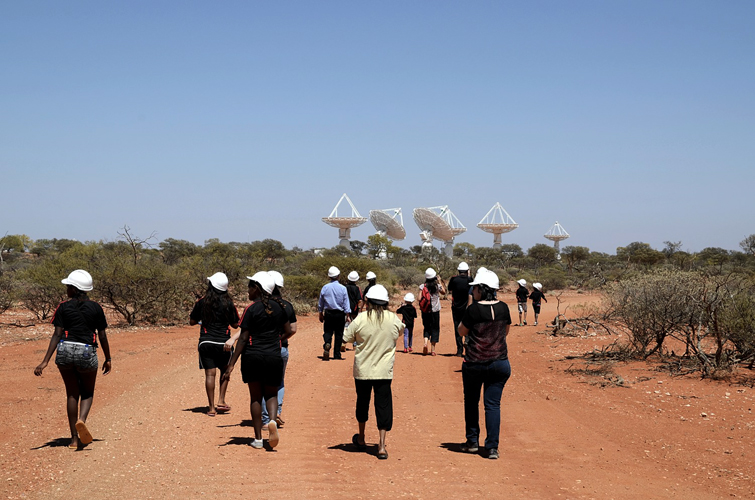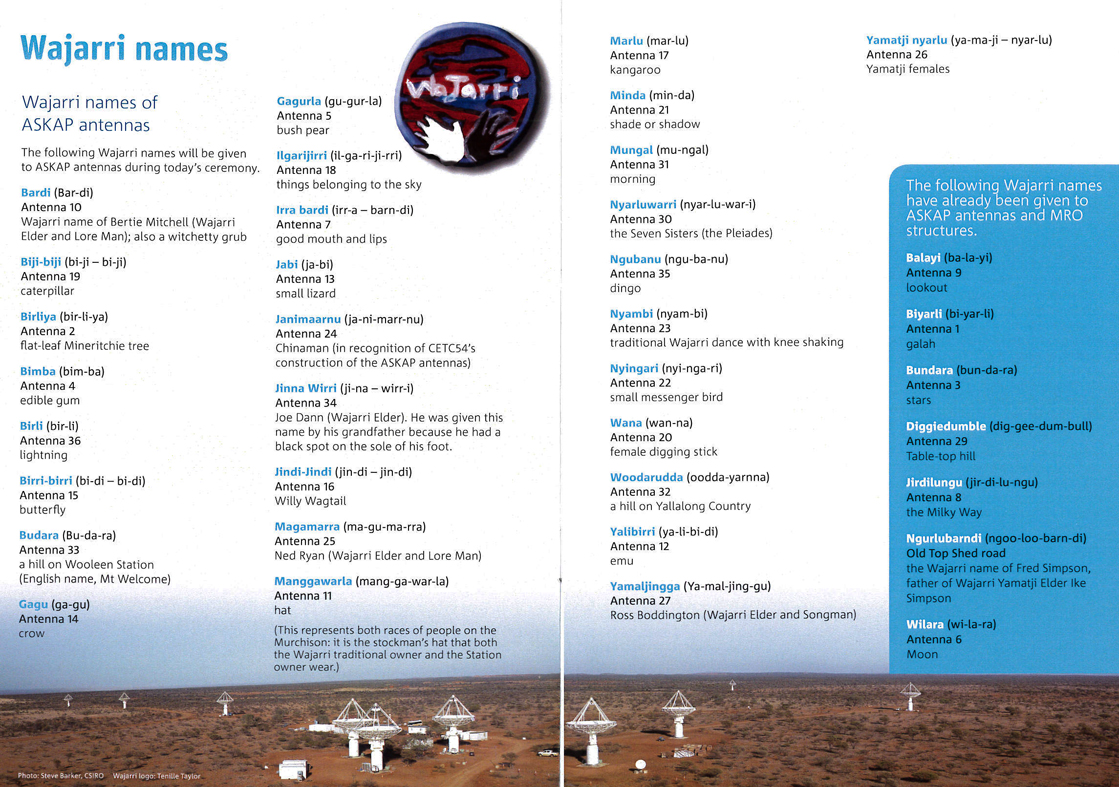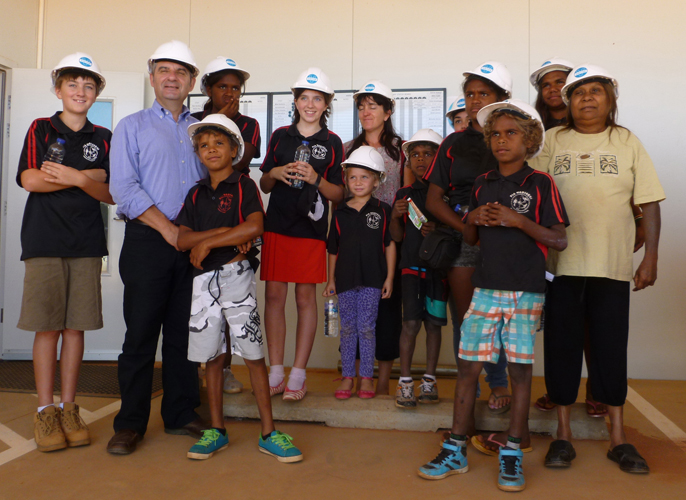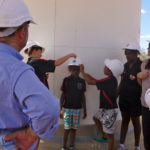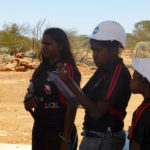By Lisa Harvey-Smith
Looking back at my Primary School days I sometimes wonder whether my career was the simple product of a Battle of the School Trips.
Pia Wajarri School visit to the MRO: building trust through shared experiences.
At six years old I was spellbound by a visit from our local policeman who taught us (sounds exciting, I know!) about road safety. To be honest, it was just so much fun to have a new face around the place, a change of pace in the school day. I am convinced that this memorable experience had at least something to do with my young ambition to join the police force.
But this was trumped the following term by a visit to a mobile planetarium. Wowee, those stars were bright. I remember how thrilling and subversive it felt to be sitting in the dark, looking up into this secret world. I have no idea what impression that planetarium had on the other kids in my class but for me it planted a seed for the passion that has lit my path to a career as a professional astronomer.
Reflecting on the profound importance that these experiences had on my life drives me to ask – what I can do to give back? How can I be that influence, that catalyst that prods maybe just one child to think differently about their future and into a career that ignites their passion for learning?
Walking towards the ASKAP antennas at the MRO.
So this year my CSIRO colleagues, Rob Hollow and Yanett Contreras, and I have been running a mentoring program the Pia Wadjarri Remote Community School. A few weeks ago we went on our second visit to Pia; a small community in the Mid-West of Western Australia, inhabited primarily by the Wajarri Yamaji people, the traditional owners of the Murchison Radio-astronomy Observatory (MRO) – home to our ASKAP telescope.
A mentoring program is a little different from traditional outreach activities in that we try not only to inform and inspire students with our subject matter, but also to provide a lasting relationship that enables students to grow in confidence and develop an enhanced sense of self. This kind of program requires a significant time commitment.
Our first session in August introduced the concepts of our work – namely earth and space. Working with the whole school, we led some fun and interactive games but with such a short visit, I left with a nagging feeling that we had made a good start but that something was missing.
Fast-forward two months and enter the second two-day mentoring visit – complete with the all-important School Trip – and we were really cooking with gas. We began this visit to Pia Wajarri with a classroom discussion about our place on the earth including the themes of country and language. For this exercise we discussed our different countries of origin (in our case, the U.K. and Chile) and what languages we speak.
The kids reacted to our Spanish, Dutch, Greek and German phrases with hysterical laughter! That led quite naturally to a conversation about the Wajarri language and the meanings of the Wajarri names that were assigned to the 36 ASKAP antennas at a community naming ceremony. I felt that this activity was a real icebreaker, not only with the students but also with the classroom assistant and teachers who all joined in the conversation.
The traditional Wajarri names (and their meanings) bestowed on each of the 36 ASKAP antennas.
In our next lesson we encouraged the students to think more carefully about the career options that are open to them in the region, including (but by no means exclusively) ones that involve the MRO, its infrastructure and its scientific use. We found some common themes through this discussion and identified a number of areas of interest that can be followed up, particularly with the older students who are approaching the age where they start to think about training opportunities. At the end of the day I felt very satisfied that we had made real progress with trust, cultural awareness and further education/careers.
Our visit to the MRO on Tuesday was the pivotal day for staff, students and mentors alike; a guided tour of the observatory is a rare treat. We showed off the control building, a high-tech but windowless monster that houses the signal processing and electronics for both ASKAP and the MWA. Although the flashing lights of the correlator room were a definite hit, the kids seemed most taken with the radio-proof ‘airlock-style’ doors that keep the telescopes shielded from electromagnetic interference generated by the high-tech kit inside the building. You know what they say – give a kid a present and they’ll play with the wrapping!
Next, we got the students kitted out in hard hats – a novelty for the youngsters. Our walk to the towering dishes at the centre of the ASKAP array was accompanies by lots of excited chatter.
Hard hats proved a definite hit with the young visitors!
The antenna tours were unsurprisingly the highlight of the day, with students given plenty of time to explore the antennas both inside and out, watch the dishes move and take on some maths puzzles involving guessing the height of the dishes.
- Students from Pia Wajarri Remote Community School estimating the height of the ASKAP dishes relative to students’ heights.
- Students from Pia Wajarri Remote Community School estimating the height of the ASKAP dishes relative to students’ heights.
As the students left that afternoon, waving enthusiastically and shouting their goodbyes, we felt a sense of satisfaction that this school trip had been a great success. I am confident that it has made a profound impression on many of the students and that the legacy of this visit will form the ideal basis for an ongoing mentoring relationship that will prove valuable and influential in these students’ young lives.
Lisa Harvey-Smith is CSIRO’s ASKAP Project Scientist, and has previously written posts for both our universe@csiro and news@csiro blogs.


